
Hyogo Prefecture Guide: Destinations, Activities, Travel Advice, Shopping & More
- Written by: Kaori Kimura
Hyogo Prefecture (兵庫県) stretches from the Sea of Japan in the north to the Seto Inland Sea in the south, offering a rich mix of nature and culture. With attractions like the European-style architecture of Kobe’s Ijinkan district, lively Chinatown, the UNESCO-listed Himeji Castle, and historic hot springs like Arima Onsen, there's no shortage of must-see spots.
This guide covers everything you need to know before visiting, from seasonal highlights to local cuisine and souvenir picks.
(This page contains promotional content)
- Table of Contents
-
- What Makes Hyogo Special? Discover Its Most Loved Highlights
- Getting to Hyogo
- Spring in Hyogo (March–May)
- Summer in Hyogo (June–August)
- Autumn in Hyogo (September–November)
- Winter in Hyogo (December–February)
- Area Highlights: Kobe
- Area Highlights: Arima Onsen & Mt. Rokko
- Area Highlights: Tamba & Sasayama
- Area Highlights: Awaji Island
- Area Highlights: Himeji
- Area Highlights: Kinosaki Onsen
- Must-Try Foods in Hyogo
- Souvenirs from Hyogo
- Helpful Tips for Visiting Hyogo
- Experience All That Hyogo Has to Offer!
What Makes Hyogo Special? Discover Its Most Loved Highlights
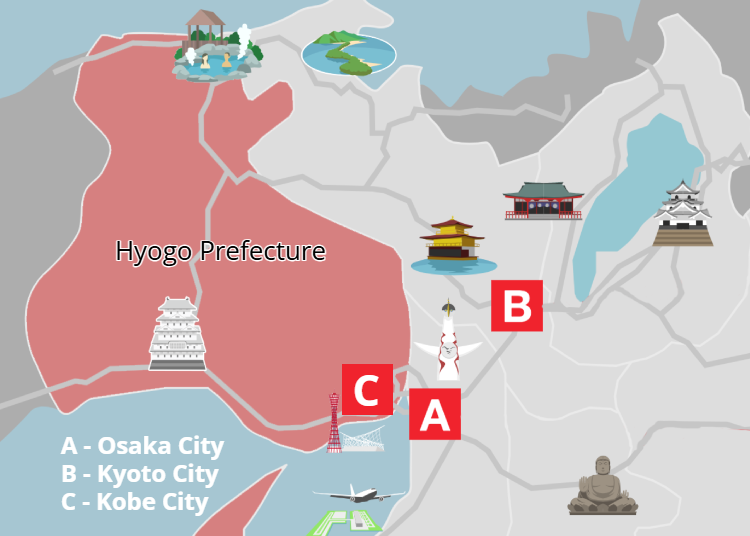
- A landscape that spans coasts, mountains, and islands—perfect for varied outdoor adventures
- Home to famous hot springs like Arima Onsen, one of Japan’s oldest and most historic
- Distinct local cultures across five regions, offering everything from elegant Kobe streets to rustic Tajima countryside
- Celebrated food heritage, including Kobe beef, Tajima wagyu, fresh seafood, and handcrafted sake
- Iconic landmarks like Himeji Castle, a UNESCO World Heritage Site
- Easy access from Osaka and Kyoto, making it ideal for both day trips and deeper exploration
Nature and the Outdoors
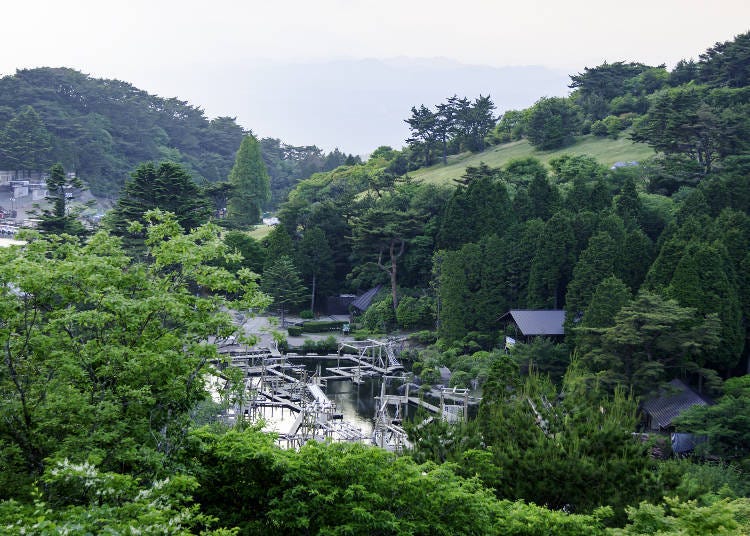
Hyogo Prefecture stretches from the Sea of Japan in the north to the Seto Inland Sea in the south, with access to the Pacific Ocean beyond. Its diverse landscape includes some of the Kansai region’s tallest peaks like Mt. Hyōno, the wide-domed Mt. Hachibuse, and Mt. Rokko—famous for its panoramic night views. Here are some top outdoor spots to explore nature in Hyogo.
1. Mt. Rokko
A symbol of Kobe, Mt. Rokko offers more than just hiking and trekking—it’s also renowned for its scenic viewpoints. From the summit, visitors can enjoy sweeping views of Kobe and Osaka by day, and the glittering “10-million-dollar night view” after sunset. In winter, Rokko Snow Park opens for skiing and snowboarding. For year-round fun, GREENIA, one of Japan’s largest athletic parks, features land, aerial, and water-based obstacle courses.
2. Awaji Island
Floating in the Seto Inland Sea just south of Kobe, Awaji Island is surrounded by both ocean and mountains. Though it’s a remote island, it’s easily accessible via the Akashi Kaikyō Bridge. Outdoor highlights include Ohama Beach, known for its white sands and pine groves; the family-friendly amusement park Awaji World Park ONOKORO; and the flower-filled Hyogo Prefectural Park Awaji Hanasajiki.
3. Tajima
In northern Hyogo, the Tajima region faces the Sea of Japan and includes part of the San’in Kaigan National Park, known for its rugged coastal scenery. Tajima Bokujō Park Ski Resort boasts open ski slopes with sea views on clear days. Another standout is Takeda Castle Ruins, often dubbed “the castle in the sky” for its dramatic appearance floating in the early morning mist.
Hot Springs and Relaxation
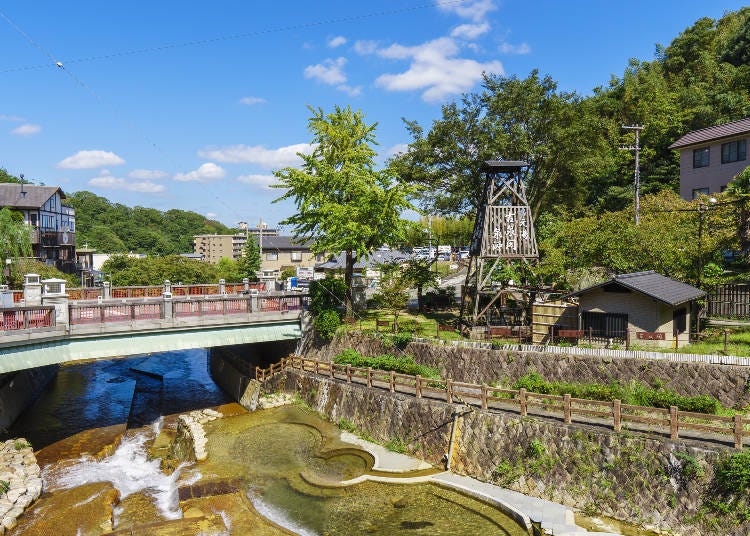
Hyogo is home to a wide range of hot springs—from historic destinations known across Japan to hidden gems tucked away in the countryside.
1. Arima Onsen
Often called the “inner sanctum” of Kansai, Arima Onsen is one of Japan’s three oldest hot springs. Its waters contain seven of the nine main therapeutic components designated for healing baths, making it one of the most mineral-rich and unique hot springs in the world. The nostalgic charm of its traditional streets remains intact, and it's only about 30 minutes from central Kobe by public transport.
2. Kinosaki Onsen
One of the most beloved onsen towns in the Kansai region, Kinosaki Onsen lies in northern Hyogo, just a few kilometers from the Sea of Japan. With over 1,300 years of history, the town is famous for its seven distinct public bathhouses, perfect for onsen-hopping in a yukata. Visitors also enjoy fresh local seafood, and photo spots like the willow-lined Otani River and the graceful Taiko Bridge.
3. Awaji Island Hot Springs
Awaji Island is rich in natural hot spring sources. Highlights include Sumoto Onsen, the island’s largest onsen town, and Minami-Awaji Onsenkyo, home to six different spring sources. The island offers a wide variety of accommodations, from luxurious international resorts to traditional inns with spectacular views.
History & Culture
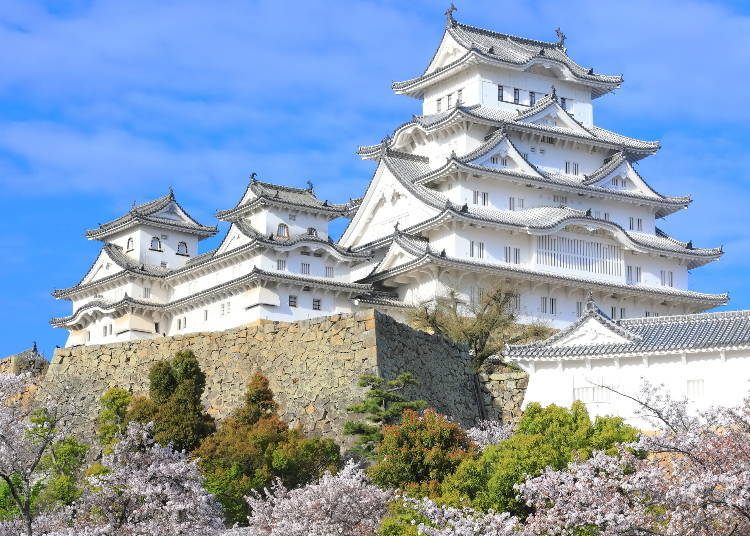
Hyogo Prefecture is rich in history, with numerous cultural and historical spots waiting to be explored.
1. Himeji Castle
One of Hyogo’s most iconic landmarks, Himeji Castle is both a UNESCO World Heritage Site and a designated National Treasure. Its striking white silhouette against the sky resembles a white heron taking flight, earning it the nickname “White Heron Castle.” Inside, you can explore the keep, gardens, and historical exhibits to learn about the Sengoku and Edo periods.
2. Arima Onsen
Arima Onsen is one of Japan’s oldest hot spring resorts, even mentioned in the Nihon Shoki (Chronicles of Japan). Historical sites such as Gokurakuji Temple—said to have been established by Prince Shotoku—and the Taiko-no-Yudono Museum provide fascinating glimpses into the region’s heritage.
3. Akashi City
Akashi flourished as a castle town centered around Akashi Castle. It lies directly on the 135° East meridian, the basis for Japan Standard Time, and is known as the “City of Time.” You'll find monuments tied to ancient poets like Kakinomoto no Hitomaro and landscapes featured in The Tale of Genji by Murasaki Shikibu, offering rich connections to Japanese literary history.
Local Cuisine & Sake
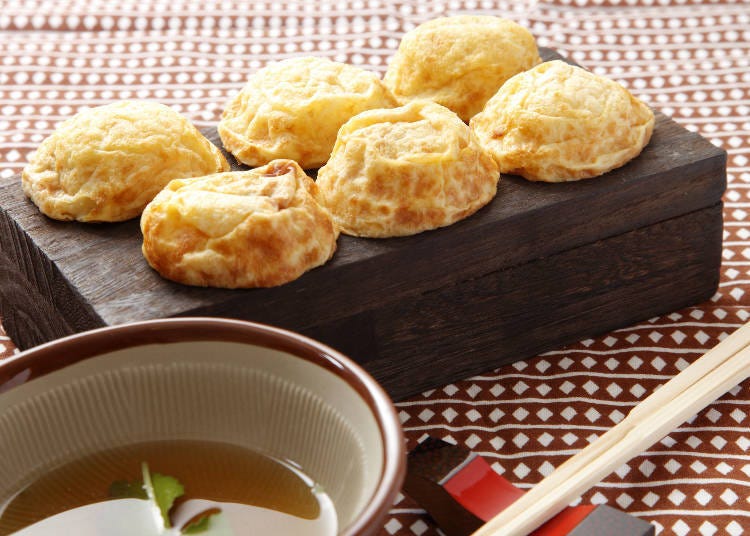
Hyogo Prefecture, with its bountiful sea and mountains, is home to a variety of unique local dishes. Here are some of its most iconic specialties.
1. Akashiyaki
A specialty of Akashi City, this dish is made by mixing wheat flour, jin-ko (wheat starch), eggs, and dashi broth, then adding octopus and cooking it on a copper plate. The fluffy pieces are served on a wooden tray and dipped into a light broth before eating. Though it looks similar to takoyaki, Akashiyaki is made without sauce and has a softer texture and lighter flavor.
2. Kobe Beef Steak
This premium steak is made by grilling Tajima-ushi (Tajima cattle) on a hotplate, seasoned with salt and pepper, and served with steak sauce or mustard. It gained international fame when U.S. President Obama ordered Kobe beef during his 2009 visit to Japan.
3. Banshu Hand-Stretched Somen Noodles
Produced in the Banshu region of southern Hyogo, these somen noodles are known for their firm texture and resistance to becoming soggy after boiling. They're often associated with the high-end brand Ibonoito, managed by the Hyogo Prefecture Tenobe Somen Cooperative.
4. Japanese Sake
Hyogo is Japan’s top producer of sake and the leading grower of Yamada Nishiki, a prized sake rice variety known as the “King of Sake Rice.” With expansive plains and pure spring water from the Rokko mountain range, the prefecture is ideal for brewing. There are 9 sake brewing associations and 87 breweries across Hyogo, each offering its own regional flavor and character.
Getting to Hyogo
Access from Tokyo
Hyogo Prefecture has four shinkansen stations: Shin-Kobe on the Tokaido and Sanyo lines, and Nishi-Akashi, Himeji, and Aioi on the Sanyo line. Shin-Kobe Station offers easy access to central Sannomiya, which is well connected by JR and private railways—making it a convenient entry point from other regions.
By train, take the shinkansen from Tokyo Station to Shin-Kobe, then transfer to the subway to reach Sannomiya.
Flights are available from Haneda Airport to Kobe Airport (approx. 1 hour 15 minutes).
Overnight buses also run from Tokyo Station (Yaesu South Exit) to Sannomiya (approx. 9 hours 40 minutes).
Train (Example)
・Tokyo Station → JR Shinkansen Nozomi → Shin-Kobe Station → Kobe Municipal Subway Seishin-Yamate Line → Sannomiya Station
・Time: Approx. 3 hours 10 minutes
・Fare: Approx. 15,000 yen (one-way, non-reserved seat)
Flight (Example)
・Haneda Airport → Kobe Airport
・Time: Approx. 1 hour 10 minutes
・Fare: From around 15,000 yen
・Browse domestic flights here
Overnight Bus (Example)
・Tokyo Station Yaesu South Exit → Sannomiya Bus Terminal (via West Japan JR Bus)
・Time: Approx. 9 hours 40 minutes
・Fare: Approx. 5,500 yen
・Check routes on Highway-buses.jp
- JR Pass for Whole Japan (7, 14, 21 Days)
- ・Best for: Nationwide travel from Kobe, including Tokyo, Hokkaido, Kyushu, etc.
・Why: Unlimited access to most JR trains, including shinkansen (except Nozomi/Mizuho). Ideal for long-distance, multi-region travel.
- JR West All Area Pass
- ・Best for: Extensive West Japan travel including Kobe, Hiroshima, Kyoto, and even Kanazawa
・Why: Covers a massive region at a lower cost than the national pass, including many major cities and scenic spots.
- JR Kansai Mini Pass (3 Days)
- ・Best for: Short regional trips from Kobe to Kyoto, Osaka, and Nara
・Why: Budget-friendly and convenient for quick Kansai area sightseeing, including major cultural spots.
Access from Osaka
Getting to Hyogo from the Osaka area is simple and convenient. Whether you're headed to Kobe (Sannomiya), Himeji, or Awaji Island, there are multiple transport options depending on your destination.
Kobe (Sannomiya) Area
Train (Example)
・Osaka Station → JR Kobe Line Special Rapid Service → Sannomiya Station
・Time: Approx. 25 minutes
・Fare: Approx. 420 yen
Himeji Area
Train (Example)
・Osaka Station → JR Kobe Line Special Rapid Service → Himeji Station
・Time: Approx. 1 hour 2 minutes
・Fare: Approx. 1,460 yen
Awaji Island Area
Train & Bus (Example)
・Osaka Station → JR Kobe Line Special Rapid Service → Sannomiya Station → Highway Bus (Shinki Bus or Kakehashi-go) → Sumoto Highway Bus Center
・Time: Approx. 2 hours 15 minutes
・Fare: Approx. 2,700 yen
Access from Kobe Airport
Kobe Airport offers smooth connections into central Kobe and beyond. Here are a couple of convenient ways to reach Sannomiya.
Train (Example)
・Kobe Airport Station → Port Island Line → Sannomiya Station
・Time: Approx. 32 minutes
・Fare: Approx. 340 yen
Bus (Example)
・Kobe Airport → Shinki Bus → Sannomiya Subway Station
・Time: Approx. 21 minutes
・Fare: Approx. 340 yen
Spring in Hyogo (March–May)
While temperatures can fluctuate, sunny days are generally mild and pleasant—making spring one of the best times of year to explore Hyogo.
- March: 9.7°C (49°F)
- April: 17.5°C (64°F)
- May: 19.2°C (67°F)
Climate & Sights
・March: Still chilly, especially in the mornings and evenings. The average high is 13.4°C (56°F), and the low is 6.3°C (43°F). Cherry blossoms begin blooming in late March. A heavy coat is essential in early to mid-March, with a lighter coat and scarf recommended for late March. Allergy sufferers should prepare for peak pollen season.
・April: Warmer days with highs around 21.3°C (70°F) and lows of 14.1°C (57°F). Early April sees cherry blossoms in full bloom—Himeji Castle is a standout viewing spot. While it may be warm enough to go without a jacket during the day, carry a cardigan or light jacket.
・May: Temperatures rise further, with average highs of 23.2°C (74°F) and lows of 15.5°C (60°F). Mornings and evenings are milder, and short sleeves become comfortable for daytime outings. Still, it’s wise to bring a hoodie or cardigan for cooler spots and early hours. UV protection like sunscreen and a hat is also recommended as sunlight strengthens.
Recommended Spring Spots in Hyogo
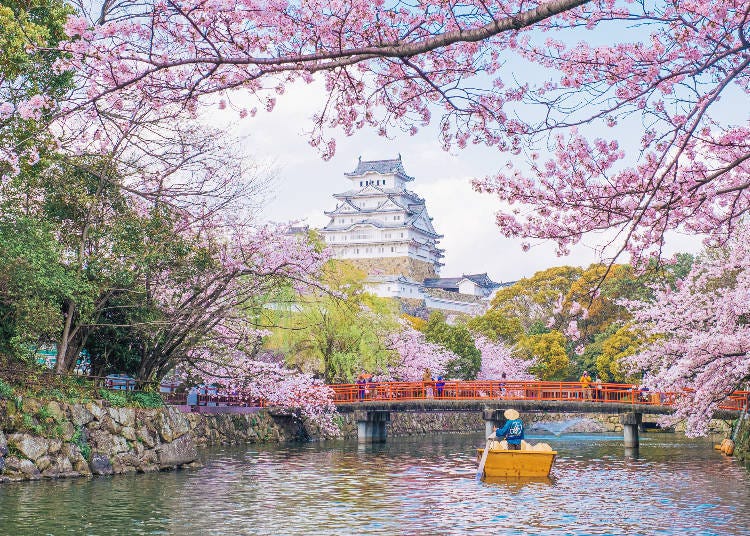
1. Cherry Blossoms at Himeji Castle
A UNESCO World Heritage Site, Himeji Castle is also one of Hyogo's most famous cherry blossom spots. The sakura-lined paths in Sannomaru Square and the stunning Somei Yoshino and weeping cherry trees in Nishi-no-Maru Garden are not to be missed.
2. Flower Fields at Awaji Hanasajiki
From March to mid-April, fields of rapeseed blossoms and purple Chinese violet cover the landscape. By late April, Iceland poppies reach full bloom, and in mid-May to mid-June, snapdragons burst into vibrant spring colors.
3. Fresh-Green Hiking in Mt. Rokko
Mt. Rokko, a symbol of Kobe, lies just north of the city with access from major train lines like Hankyu, Hanshin, JR, and Kobe Electric Railway. It's perfect for spring hiking, offering trails for all levels—from beginner-friendly routes to more serious mountain treks.
Recommended Spring Events
1. Tulip Festival
Held at the Hyogo Prefectural Flower Center in Kasai City, this festival features 140,000 tulips in 300 varieties blooming across the gardens—offering a colorful spring spectacle.
2. Nighttime Cherry Blossom Walk at Oji Zoo
Enjoy both adorable animals and cherry blossoms at Kobe Oji Zoo. During the event, the cherry blossom-lined paths are beautifully illuminated, creating a dreamy tunnel of light and petals.
Summer in Hyogo (June–August)
Summer in Hyogo is hot and humid, especially in July and August. The humidity often makes it feel warmer than the actual temperature. Stay hydrated, and don’t forget essentials like a hat and sunglasses.
- June: 23.5°C (74°F)
- July: 29°C (84°F)
- August: 30.2°C (86°F)
Climate & Sights
・June: With an average high of 26.9°C (80°F) and low of 20.6°C (69°F), temperatures may seem comfortable, but the humidity makes it feel hotter. Light short-sleeved shirts work well, but bring a water-repellent jacket or raincoat for cooler rainy days.
・July: Average highs reach 32.1°C (90°F) and lows 26.6°C (80°F). After the rainy season ends in mid-to-late July, expect many hot, sunny days with occasional sudden downpours. Breathable fabrics like linen are ideal, and quick-dry underwear helps. Don’t forget sun protection: hats, sunglasses, or a parasol.
・August: The hottest month of the year, with average highs of 34.5°C (94°F) and lows of 27.5°C (82°F). Heatstroke risk is high, and tropical nights where the temperature doesn't drop below 25°C (77°F) are common in urban areas. Wear light, airy clothes—like dresses or shorts—and carry a handheld fan or uchiwa to stay cool.
Recommended Summer Spots in Hyogo
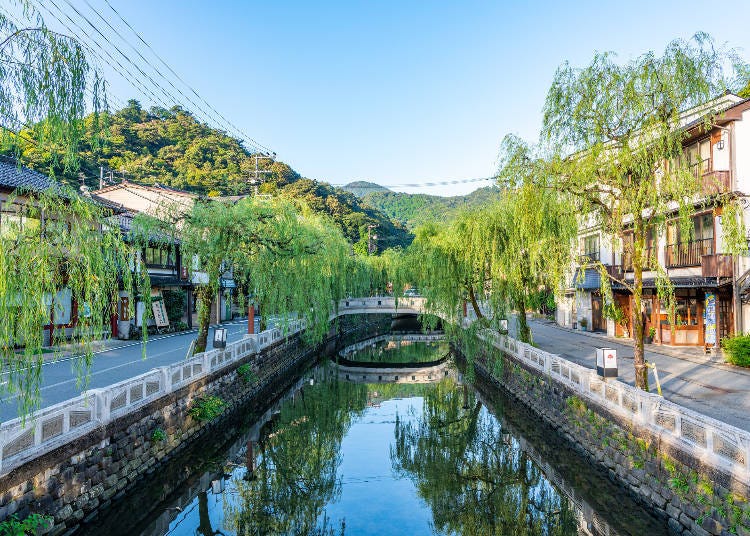
1. Beat the Heat on Mt. Rokko
At 931 meters above sea level, Mt. Rokko is about 5°C (9°F) cooler than the city below, making it a popular and easily accessible summer escape. It’s also a great spot for enjoying night views in the cooler evening hours.
2. Yukata and Onsen-Hopping in Kinosaki
Slip into a summer yukata and explore the town’s famous public bathhouses. Known as one of Japan’s most charming yukata towns, Kinosaki also hosts nightly fireworks along the lit-up Otani River on weekdays from late July to mid-August.
3. Pools at Himeji Central Park Safari Resort
Home to one of the largest resort pool areas in western Japan, this summer spot features a lazy river, wave pools, and exciting water slides—perfect for a full day of family fun.
Recommended Summer Events
1. Ashiya Summer Carnival
Held in Ashiya City, this vibrant summer festival features performances by local residents, festival stalls, and a fireworks finale to light up the night sky.
2. Kobe Love Port Minato Matsuri
This festive event at Meriken Park includes dance shows, live music, nostalgic festival foods, a splash zone water fight, and a marine carnival—offering nonstop entertainment.
3. Kinosaki Onsen Furusato Festival
Along Otani River in Kinosaki Onsen, around 40 food stalls and kitchen trucks offer summer treats like shaved ice and takoyaki, alongside classic festival games. While fireworks light up the sky on most weekdays in late July, this night features a special edition.
Autumn in Hyogo (September–November)
Autumn is one of the best seasons to visit Hyogo, with cooler, more comfortable weather. The southern areas like Kobe and Himeji remain mild, while mountain regions such as Mt. Rokko and Tamba can feel noticeably cooler.
- September: 28.6°C (83°F)
- October: 22.5°C (73°F)
- November: 15.4°C (60°F)
Climate & Sights
・September: Still hot with an average high of 32.2°C (90°F) and low of 26.1°C (79°F). Though autumn on the calendar, summer clothing like T-shirts and shorts are still appropriate. The sun is strong, so a hat and sunscreen are essential.
・October: Cooler temperatures begin to settle in, with highs around 25.7°C (78°F) and lows of 19.7°C (67°F). While the city foliage hasn’t turned yet, mountainous areas begin showing autumn colors. Long sleeves and pants are ideal, with a cardigan or light jacket for layering.
・November: The true autumn season begins. Highs average 18.7°C (66°F) and lows 12.2°C (54°F). Sweaters and long pants with a coat or jacket are recommended, and scarves or stoles help on chilly mornings and evenings. By late November, colorful leaves start appearing even in the city, and the crisp air offers clear mountain views.
Recommended Autumn Spots in Hyogo
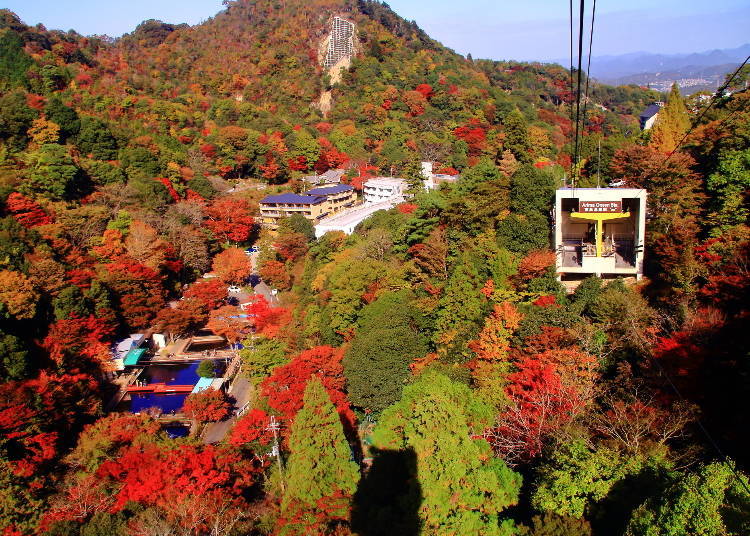
1. Autumn Foliage on Mt. Rokko
Mt. Rokko is a beloved destination for fall colors. For the best views, ride the Rokko-Arima Ropeway and enjoy sweeping vistas over the valleys of the mountain’s northern side. The leaves typically peak from early to late November.
2. Fall Colors & Harvest in Tamba Sasayama
In addition to its vibrant foliage, Tamba Sasayama is known for seasonal delights like Tamba chestnuts and black soybeans. Don’t miss the “Momiji Three-Temple Tour,” which includes Takzoji, Bunpoji, and Daikokuji—each offering rich fall scenery.
3. Fruit Picking on Awaji Island
At farms like Awajishima Fruit Farm and Furukawa Farm, visitors can enjoy grape, mandarin, sweet potato, and chestnut picking. Advance reservations are recommended during peak season. Most farms offer all-you-can-eat options on-site, with additional fees for take-home harvests based on weight.
Winter in Hyogo (December–February)
Winter in Hyogo brings crisp air and seasonal charm. Coastal areas like Kobe have relatively mild winters thanks to the Seto Inland Sea climate, while northern regions such as Tajima may see snowfall.
- December: 8.6°C (47°F)
- January: 7.3°C (45°F)
- February: 8.7°C (48°F)
Climate & Sights
・December: With average highs of 12.2°C (54°F) and lows of 5.7°C (42°F), winter begins in earnest. A thick coat or down jacket is essential.
・January: The coldest month, with average highs of 10.8°C (51°F) and lows of 4.1°C (39°F). Continue layering with heat-retaining innerwear and sweaters or cardigans to stay warm.
・February: Still cold, with average highs of 12.1°C (54°F) and lows of 5.6°C (42°F). Dry air is common due to seasonal weather patterns, so bring lip balm and hand cream. Gloves, scarves, and pocket warmers are also recommended.
Recommended Winter Spots in Hyogo
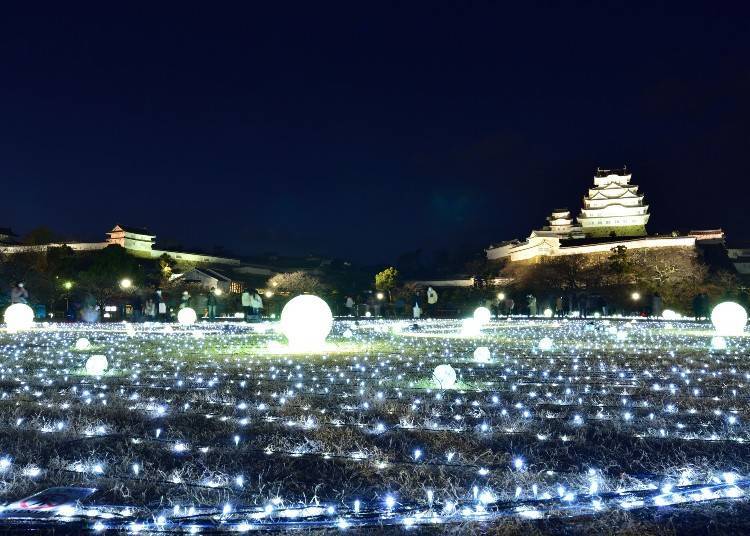
1. Skiing at Rokko Snow Park
One of the Kansai region’s most accessible ski resorts, Rokko Snow Park features gentle slopes ideal for beginners. It also has a special “Snow Land” area for sledding and snow play, making it perfect for families with children.
2. Kobe Luminarie Light Display
Held in Kobe’s former foreign settlement area, this winter illumination event took place in 2025 from January 24 to February 2. Highlights include the “Spalliera” wall of light at Higashi Yuenchi, glowing installations in the old settlement, and a 79-meter light tunnel and 51-meter-wide “Frontone” at Meriken Park (admission required).
3. Himeji Castle Illumination
From late November through late February, areas like Otemae Street and Otemae Park—from Himeji Station to the castle—are lit up with festive LED displays. In recent years, as many as 250,000 lights have been used. If you're lucky, you might even catch a glimpse of Himeji Castle dusted in snow.
Area Highlights: Kobe
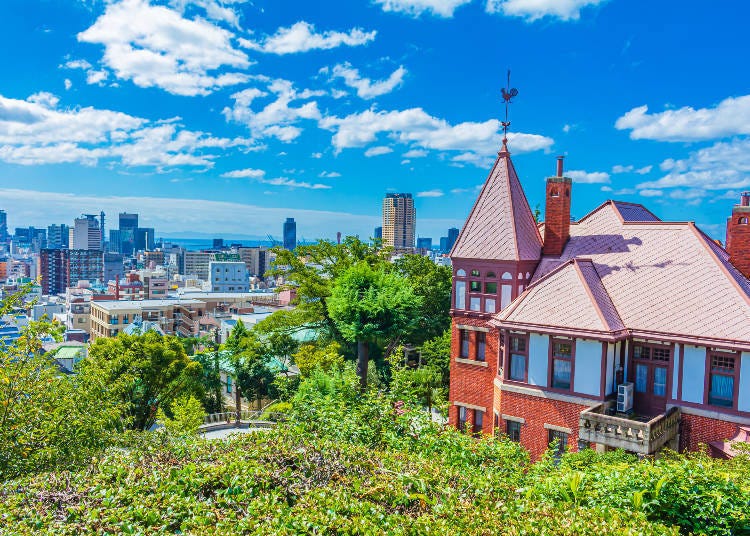
Kobe is one of Hyogo’s major tourism hubs. Explore the exotic charm of the Kitano Ijinkan district, stroll through scenic Meriken Park, enjoy the natural beauty and historic sake brewery towns, and relax in time-honored hot spring resorts—Kobe offers a rich blend of culture, nature, and sophistication.
Kitano Ijinkan
The Kitano Ijinkan area flourished as a foreign residential district following the opening of Kobe Port. Today, visitors can tour charming Western-style houses, including cultural landmarks like the Weathercock House and the Moegi House—both designated Important Cultural Properties.
-

-
Address
Kitanocho, Chuo-ku, Kobe-shi, Hyogo, Toru Yamamoto, 650-0002
View Map -
Nearest Station
Sannomiya Station (JR Tokaido Line / JR Kobe Line)
7 minutes on foot
- Phone Number 078-251-8360
-
Address
Kitanocho, Chuo-ku, Kobe-shi, Hyogo, Toru Yamamoto, 650-0002
Kobe Bay Area
This iconic waterfront district captures the essence of port city Kobe. Visit Meriken Park for seaside views and open-air relaxation, then explore Kobe Harborland for shopping and dining. Don’t miss landmarks like Kobe Port Tower and the Mosaic Ferris Wheel.
-

-
Address
Hatobacho, Chuo-ku, Kobe-shi, Hyogo, 650-0042
View Map -
Nearest Station
Minatomotomachi Station (Kaigan Line (yume-kamome))
8 minutes on foot
- Phone Number 078-304-2500
-
Address
Hatobacho, Chuo-ku, Kobe-shi, Hyogo, 650-0042
-

-
Address
5-5, Hatobacho, Chuo-ku, Kobe-shi, Hyogo, 650-0042
View Map -
Nearest Station
Minatomotomachi Station (Kaigan Line (yume-kamome))
7 minutes on foot
- Phone Number 078-391-6751
-
Address
5-5, Hatobacho, Chuo-ku, Kobe-shi, Hyogo, 650-0042
Nankinmachi
Alongside Yokohama and Nagasaki, Nankinmachi is one of Japan’s three major Chinatowns. Spanning roughly 110 meters north to south and 270 meters east to west, the area is packed with restaurants and souvenir shops. Street food like pork buns and other easy takeout options make it perfect for a flavorful stroll.
-

-
Address
Motomachidori, Chuo-ku, Kobe-shi, Hyogo, Sakaechodori, 650-0022
View Map -
Nearest Station
Kyukyoryuchidaimarumae Station (Kaigan Line (yume-kamome))
2 minutes on foot
- Phone Number 078-332-2896
-
Address
Motomachidori, Chuo-ku, Kobe-shi, Hyogo, Sakaechodori, 650-0022
Area Highlights: Arima Onsen & Mt. Rokko
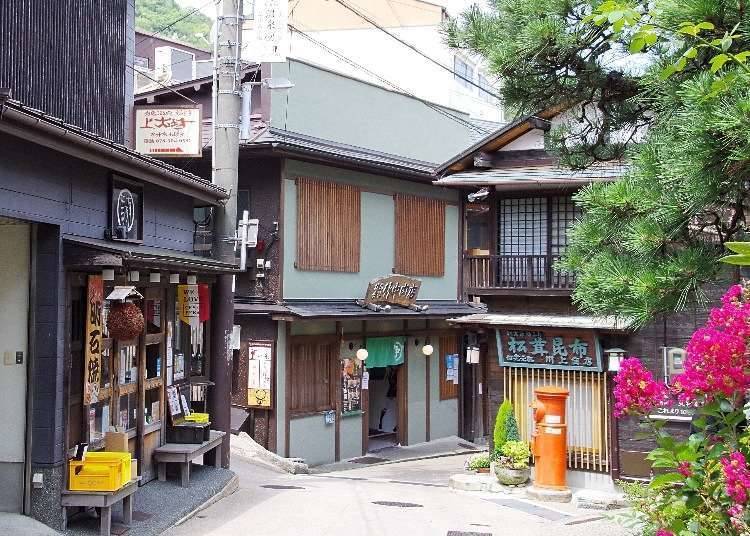
This area is home to Arima Onsen—one of Japan’s oldest hot springs—and Mt. Rokko, known as a “heavenly paradise” with sweeping views. With convenient access from Sannomiya, it’s an ideal escape into nature and tradition just outside the city.
Arima Onsen
Arima Onsen offers two distinct types of hot spring waters: the famous reddish-brown “Kinsen” and the clear “Ginsen.” Beyond a relaxing soak, enjoy strolling through the retro streets of this historic hot spring town. Be sure to stop by one of the charming vintage-style cafés after your bath!
-

-
Address
Arimacho, Kita-ku, Kobe-shi, Hyogo, 651-1401
View Map -
Nearest Station
Arimaonsen Station (Kobe Dentetsu-arima Line)
- Phone Number 078-904-0708
-
Address
Arimacho, Kita-ku, Kobe-shi, Hyogo, 651-1401
Mt. Rokko
Just a 30-minute drive from central Kobe, Mt. Rokko is a lush highland resort perfect for a quick escape into nature. Highlights include Rokko Pasture, where sheep and goats roam, the expansive Rokko Athletic Park GREENIA, and the scenic Rokko Garden Terrace with panoramic night views of Kobe.
-

-
Address
Motoyamachomori, Higashinada-ku, Kobe-shi, Hyogo, 657-0111
View Map -
Nearest Station
Rokkomichi Station (JR Tokaido Line / JR Kobe Line)
- Phone Number 078-303-1188
-
Address
Motoyamachomori, Higashinada-ku, Kobe-shi, Hyogo, 657-0111
Area Highlights: Tamba & Sasayama
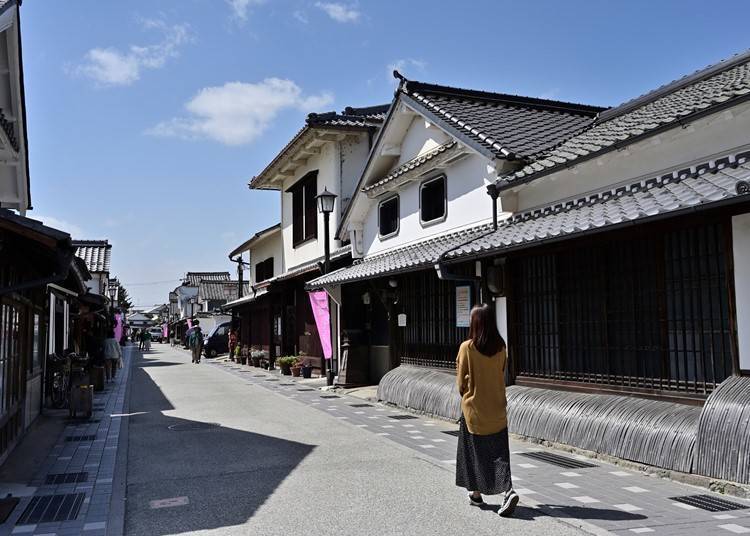
This area includes Tamba City and Tamba Sasayama, once the cultural heart of the former Tanba Province. Tamba Sasayama retains its charming, historic streets, with many shops housed in old traditional buildings—perfect for a leisurely retro stroll.
Tamba Sasayama Castle Town
Explore the historic charm of Tamba Sasayama with sites like the Sasayama Castle Ruins, where original moats and stone walls remain, and the Kawaramachi Tsumairi Merchant Houses, lined with traditional buildings. The castle town atmosphere is perfect for a stroll, and don’t forget to pick up local specialties like Tamba black soybeans and chestnuts as souvenirs.
Tachikui Pottery Village
Tachikui is the home of Tamba-yaki, one of Japan’s six ancient kilns. The area is dotted with pottery studios and kilns, making it a great place to explore and shop for unique handcrafted ceramics.
Area Highlights: Awaji Island
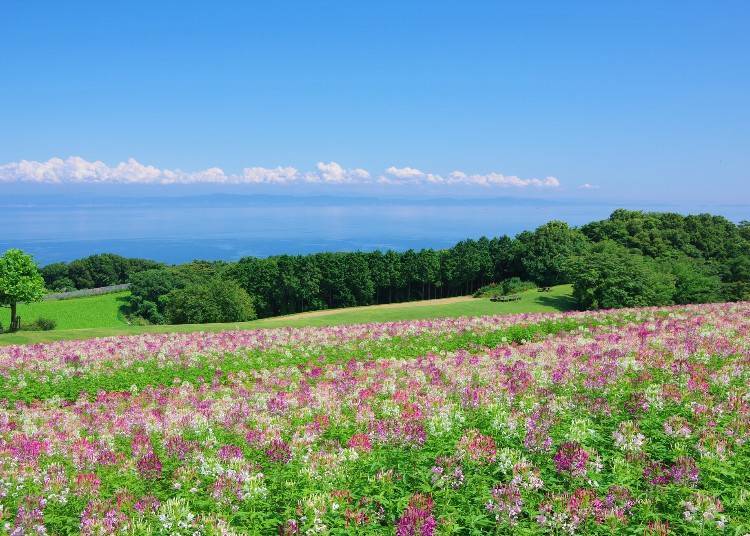
Located at the southern tip of Hyogo Prefecture, Awaji Island sits in the Seto Inland Sea. It's known for its colorful flower fields, fresh seafood, and local specialties like Awaji beef—making it a scenic and flavorful destination.
Hyogo Prefectural Park Awaji Hanasajiki
This expansive park in northern Awaji Island bursts into color throughout the year—canola flowers in spring, sunflowers in summer, and stocks in autumn. Located at an elevation of around 300 meters, the park offers sweeping views of the Akashi Kaikyo Bridge, Kobe, Osaka, and even Kansai International Airport.
Area Highlights: Himeji
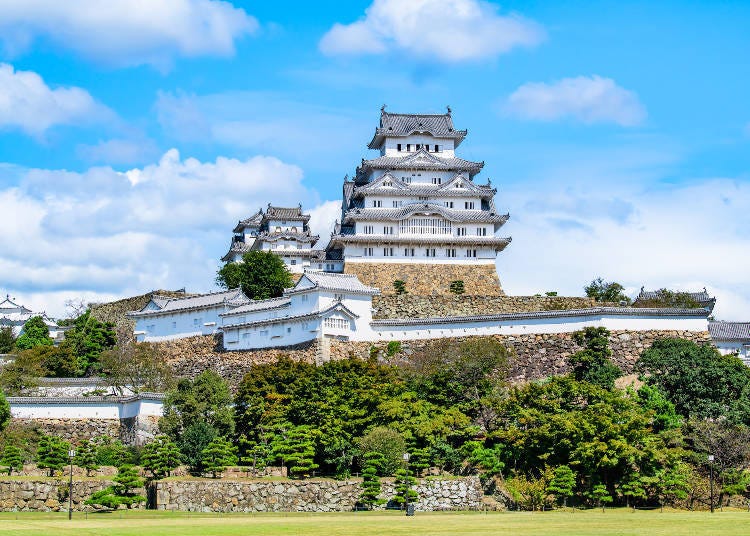
Centered around the World Heritage Site Himeji Castle, this area is a gateway to nearby attractions like the castle town of Akashi and the historic city of Ako—both perfect for day trips filled with scenic beauty and cultural exploration.
Himeji Castle
Nicknamed the “White Heron Castle” for its elegant, white exterior, Himeji Castle is a stunning example of early Edo-period architecture. Many original structures like the main keep and turrets remain intact, earning it both World Heritage and National Treasure status. Don’t miss the main keep—seven stories from basement to top—packed with historical highlights on every floor.
-

-
Address
68, Honmachi, Himeji-shi, Hyogo, 670-0012
View Map -
Nearest Station
Himeji Station (JR Kobe Line / JR Kishin Line / JR San-yo Line / JR Bantan Line)
20 minutes on foot
- Phone Number 079-285-1146
-
Address
68, Honmachi, Himeji-shi, Hyogo, 670-0012
Area Highlights: Kinosaki Onsen

Along the Sea of Japan coast, this area is home to relaxing hot springs like Kinosaki and Yumura. It’s also where you’ll find Takeda Castle, famous for its sea of clouds views. Don’t miss the regional specialties—like Matsuba crab (available from early November to mid-March) and Izushi Sara Soba, a local noodle dish served on small plates.
Kinosaki Onsen
With a history dating back before the Heian period, Kinosaki Onsen is one of Japan’s most iconic hot spring towns. Its seven public bathhouses are perfect for a relaxing onsen-hopping experience. The willow-lined river with its charming stone drum bridges is a beloved symbol—and a popular photo spot—for visitors.
-

-
Address
Yushima, Imazu, Kinosaki-cho, Toyooka City, Hyogo Prefecture, 669-6101
View Map -
Nearest Station
Kinosakionsen Station (JR San-in Line)
15 minutes on foot
- Phone Number 0796-32-0117
-
Address
Yushima, Imazu, Kinosaki-cho, Toyooka City, Hyogo Prefecture, 669-6101
Takeda Castle
Known as “Japan’s Machu Picchu” or the “Castle in the Sky,” Takeda Castle is famous for its dramatic appearance floating above a sea of clouds. This mystical view is most often seen on clear mornings in late autumn, creating a truly unforgettable scene.
-

-
Address
169, Wadayamacho Takedakojosan, Asago-shi, Hyogo, 669-5252
View Map -
Nearest Station
Takeda Station (JR Bantan Line)
- Phone Number 079-674-2120
-
Address
169, Wadayamacho Takedakojosan, Asago-shi, Hyogo, 669-5252
Must-Try Foods in Hyogo
Kobe Area
Kobe Beef
Globally renowned, Kobe beef comes from Tajima cattle raised in Hyogo and meeting strict quality standards. Known for its sweet flavor and rich aroma, it’s best enjoyed as steak, sukiyaki, or shabu-shabu.
Sobameshi
A local comfort food combining chopped fried noodles and rice, stir-fried with a savory sauce. It originated in Kobe’s Nagata Ward when a local okonomiyaki shop cooked cold rice and yakisoba together on the teppan.
Kobe Sweets
Home to famous confectionery brands like Morozoff, Kobe has become one of Japan’s top cities for Western-style sweets. Influenced by foreign residents and Japanese pastry artisans, the city has cultivated a rich dessert culture.
Chinatown Street Food
Kobe’s Nankinmachi offers delicious eats like pork buns, xiaolongbao, kakuni-man (braised pork buns), and Peking duck—perfect for sampling as you stroll through one of Japan’s top three Chinatowns.
Akashi & Harima Area
Akashiyaki
A local specialty of Akashi City. (See above for details.)
Akashi Sea Bream & Tai-meshi
This luxurious dish uses a whole wild Akashi sea bream. The flavorful rice, infused with the essence of the fish, is mixed with generous flakes of tender, savory sea bream meat.
Tamba & Sasayama Area
Tamba Black Soybeans
A prized local variety grown in the Tamba region, black soybeans are a traditional New Year’s dish. Historically offered to the shogunate and imperial court, and even used to pay taxes, they’re now enjoyed in simmered dishes and baked goods like black soybean bread.
Botan Nabe (Wild Boar Hot Pot)
A regional specialty of Tamba Sasayama, this hearty winter dish features wild boar and vegetables simmered in a blended red and white miso broth. It’s often served as a warming, celebratory meal during the colder months.
Awaji Island Area
Awaji Beef
A collective term for wagyu raised on Awaji Island. Only cattle that meet strict quality standards are given the premium label “Awaji Beef,” known for its tenderness and rich flavor.
Onion Dishes
Awaji Island is one of Japan’s top onion producers, famous for its sweet, tender Awaji onions. They’re often used in soups, curries, and other dishes that highlight their natural sweetness.
Himeji Area
Himeji Oden
Unlike the typical mustard seasoning, Himeji oden is served with a drizzle of ginger soy sauce. Common ingredients include beef tendon, daikon radish, egg, konnyaku, and chikuwa.
Himeji Ramen
Popular in Himeji City and surrounding areas like Kakogawa and Harima, Himeji ramen typically features a light soy sauce broth made from chicken stock, offering a clean, savory flavor.
Souvenirs from Hyogo
Classic & Popular Nationwide
Kobe Fugetsudo (Kobe)
A beloved Kobe confectionery brand, Kobe Fugetsudo is best known for its signature Gaufres—large, round wafers about 15 cm in diameter filled with vanilla, strawberry, or chocolate cream. The crisp texture and delicate cream melt smoothly in the mouth.
Morozoff (Kobe)
Another iconic Kobe sweets brand, Morozoff is famous for its long-selling Denmark Cream Cheese Cake. Made with rich Danish cream cheese and accented with just the right touch of lemon, this simple yet refined cheesecake is a favorite across Japan.
Western Sweets & Stylish Treats
Henri Charpentier (Ashiya)
A premium Japanese patisserie brand based in Ashiya, known for its refined baked goods. Their financiers—made with carefully selected butter and almonds—are especially popular for their rich, buttery flavor.
PATISSERIE TOOTH TOOTH (Kobe)
A stylish sweets shop in Kobe offering a wide selection of cakes like fruit tarts, along with classic baked treats such as financiers and madeleines. Perfect for gifting or enjoying with tea.
Local Specialty Souvenirs
Awaji Onion Soup & Dressings
Made with sweet, flavorful onions grown on Awaji Island, these soups and dressings make for tasty and practical souvenirs.
Tajima Beef Retort Curry
A convenient way to enjoy the rich, mild flavor of Tajima beef curry. Just heat and serve—perfect for taking a taste of Hyogo home.
Tako Senbei no Sato Rice Crackers
This senbei shop in Awaji City offers a wide variety of original rice crackers made with seafood like octopus, shrimp, and squid—crispy, savory, and full of flavor.
Banshu-Ori Textiles (Nishiwaki City)
A traditional yarn-dyed fabric from northern Harima, Banshu-ori is known for its soft cotton weave and colorful patterns. Popular items include handkerchiefs, tote bags, and stoles.
Arima Onsen Carbonated Senbei
A classic, lightly sweet cracker made from flour, starch, sugar, and baking soda. Crisp and simple, this traditional treat is a beloved souvenir from Arima Onsen.
Helpful Tips for Visiting Hyogo
Transportation Advice
1. JR and Private Rail Lines Make Kobe, Himeji, and Takarazuka Easy to Reach
Kobe’s central areas like Motomachi and Sannomiya are served by JR, Hankyu, Hanshin, and the subway—offering smooth access. For Himeji or Ako, take the JR Special Rapid Service for a quick and convenient ride.
2. Driving is Best for Exploring Awaji Island
While you can reach the island by highway bus, getting around is much easier with a rental car. There are buses, but service is infrequent.
3. Use ICOCA or Suica Cards for Seamless Travel
IC cards like ICOCA and Suica are accepted on most trains, buses, and even at some attractions and restaurants. They save time by letting you skip the ticket machines.
Area-Specific Travel Tips
1. Each Region of Hyogo Has Its Own Character
From the Sea of Japan coast in the north (like Kinosaki Onsen), to the southern Pacific side with Awaji Island, the western region with Himeji Castle, and the eastern areas of Takarazuka and Itami—each part of Hyogo has its own climate and atmosphere. If you're planning to visit multiple areas, be sure to check local weather conditions and pack accordingly.
2. Snow Is Possible in the North During Winter
Regions like Tamba, Tajima, and especially Kinosaki may experience snowfall in winter. If you plan to drive, make sure your rental car is equipped with snow tires.
Travel Smart Tips
1. Make Use of Discount Passes
If you're planning to travel around, passes like the Kansai WIDE Area Excursion Pass and Kobe Municipal Subway 1-Day Ticket are both budget-friendly and convenient. For Mt. Rokko and Arima, look into the Rokko-Arima One-Way Ticket or the Arima-Rokko 1-Day/2-Day Pass for extra savings. See Kobe City's website for more information.
2. Visit Popular Spots Early or Late
Top attractions like Himeji Castle, Nankinmachi, and the Mt. Rokko observation deck can get crowded during midday on weekends and holidays. For a more relaxed experience, aim for early morning or late afternoon visits.
Experience All That Hyogo Has to Offer!
Hyogo isn’t just about Kobe—each area offers its own must-see sights, unique local cuisine, and regional specialties. With easy access from Osaka, it’s perfect for a day trip or a longer stay. Don’t miss the chance to explore its rich diversity!
Kaori Kimura is a Japanese travel writer with roughly 20 years of experience in editing and publishing travel guides. After graduating from university, she worked at a publishing company for about 10 years, specializing in travel guides. She has undertaken numerous assignments both internationally, including in places like Paris, France, and Taiwan, as well as domestically in areas such as Hokkaido and Kyushu. Following this, she lived in Guangzhou, China for about two years as an expatriate spouse and contributed to local media, writing on economics and travel guides. Upon returning to Japan, she gained experience in editing and writing for web media. A key strength of hers is her involvement in creating travel guide articles for both inbound and outbound tourism. She possesses the highest level (HSK-6) of the standardized Chinese language proficiency test, level 2 in Japan's French language test, and EIKEN Grade Pre-1.
- Area
- Category
*Prices and options mentioned are subject to change.
*Unless stated otherwise, all prices include tax.
Recommended places for you
-

ISHIDAYA Hanare
Yakiniku
Kobe, Sannomiya, Kitano
-

Kanzenkoshitsuyakinikutabehodai Gyugyu Paradise Sannomiya
Yakiniku
Kobe, Sannomiya, Kitano
-

Jukuseiniku-to Namamottsuarera Nikubaru Italian Nikutaria Sannomiya
Izakaya
Kobe, Sannomiya, Kitano
-
Goods
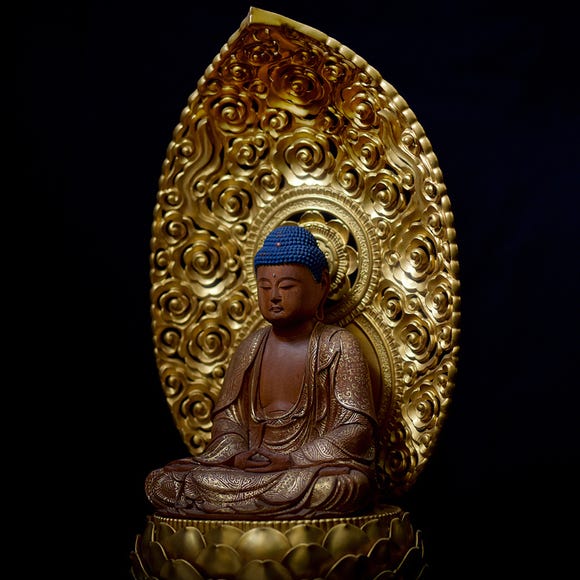
Yoshida Gennojo-Roho Kyoto Buddhist Altars
Gift Shops
Nijo Castle, Kyoto Imperial Palace
-

Kambei Sannomiyahonten
Yakiniku
Kobe, Sannomiya, Kitano
-

Todai-ji Temple
Temples
Nara, Ikoma, Tenri
-

Dorsett by Agora Osaka Sakai: Stay in a World Heritage Port Town Surrounded by History and the Sea (Newly Opened in 2025)
by: Yotsuka Hizuki
-

Kyoto Prefecture Guide: Destinations, Activities, Travel Advice, Shopping & More
-

teamLab Announces New Permanent Kyoto Museum Opening in Fall 2025
-

Yuzuya Ryokan Kyoto Gion: Enjoy Gourmet Dining in a 100-Year-Old Kyoto Townhouse (In-Depth Review)
by: Yotsuka Hizuki
-

Foreign tourists outnumber Japanese ones at Kyoto hotels for first time ever
-

Experience Hotel New Otani Osaka: Overnight Journey of Japanese Culture and Fine Dining (2-Day Itinerary)
by: Yotsuka Hizuki
Inspiration for Accommodations
-

Spacious Family Hotel in Namba: 20 Comfortable Stays for Family Fun
-
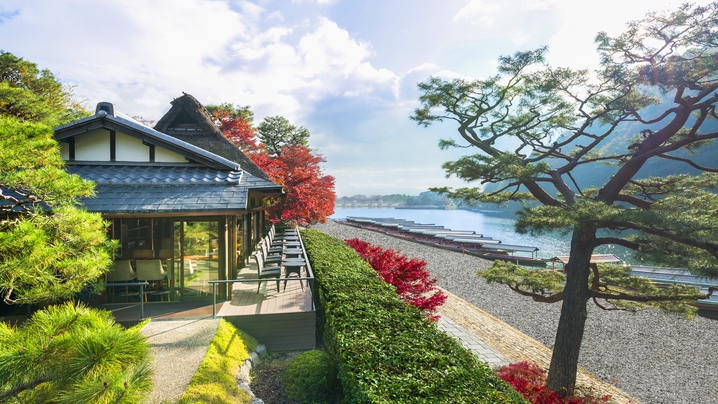
Charming Hotels to Enjoy the Spectacular Views of Arashiyama's Autumn Leaves from Your Room
-

Experience Stunning Views of Osaka Castle from Private Spaces: Top Hotels Near Osaka Castle
-
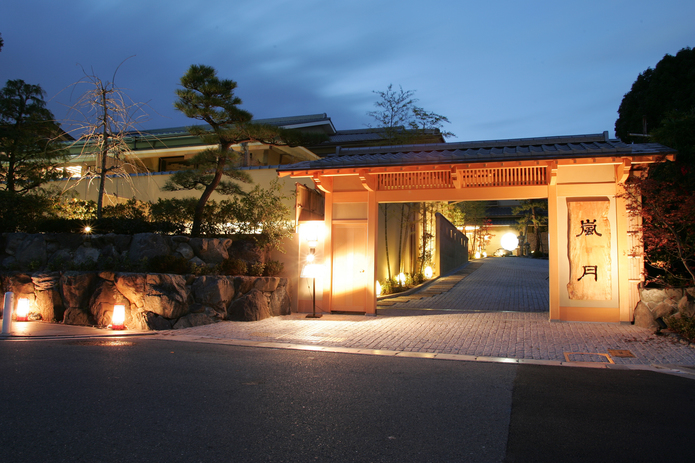
Recommended by Visitors! Arashiyama's Best-Rated Hotels
-

Family-Friendly Universal Studios Japan Hotel with Excellent Access
-
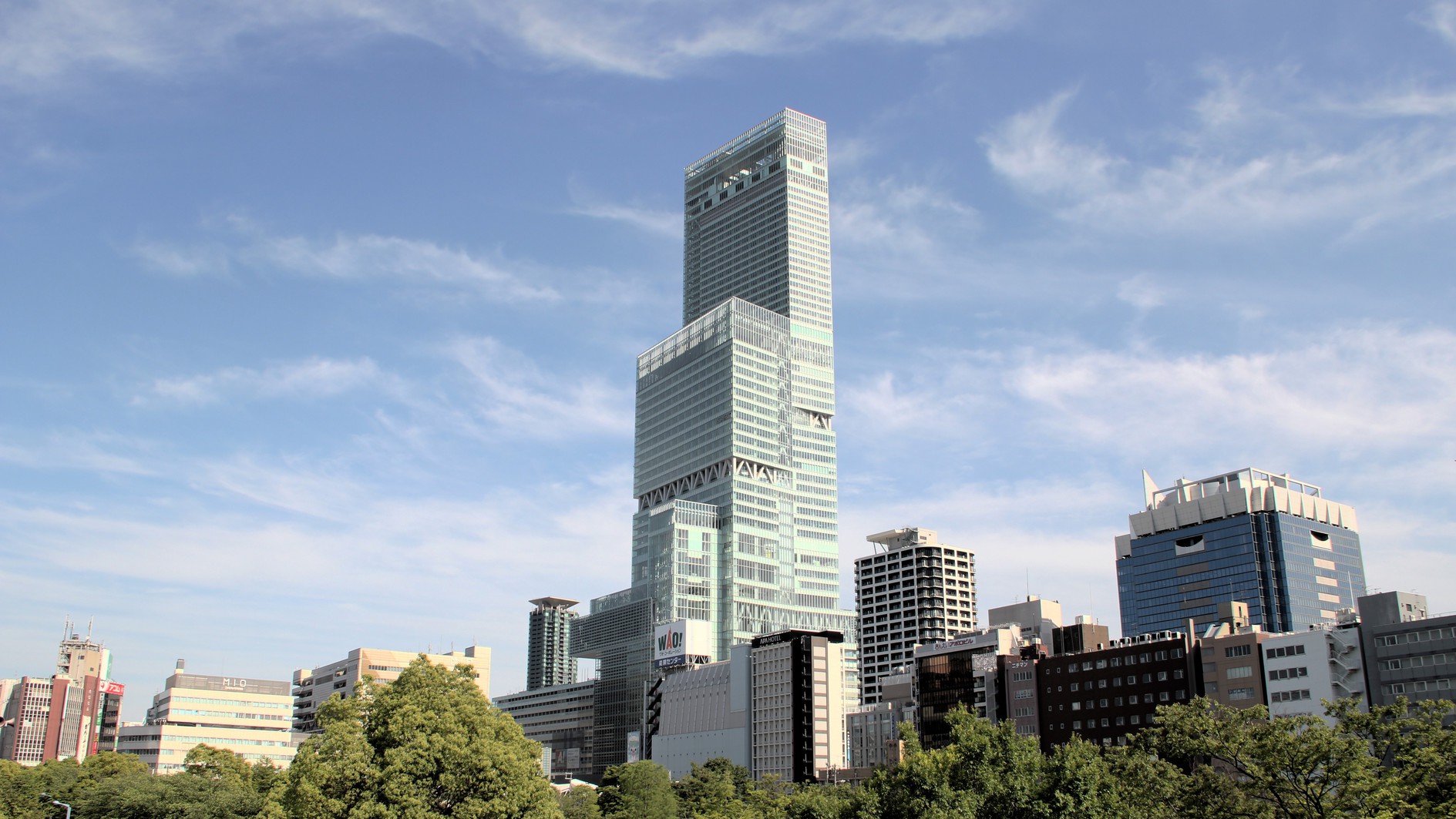
Enjoy a Comfortable Stay in Osaka! 10 Hotels with Convenient Airport Shuttle Services
-

Top 10 Recommended Hotels Near Namba Station with Great Access
-

Enjoy Night Views from Your Room! Recommended Hotels in Namba Area
-

Inside Kobe Tower: Fun Things to Do at the Symbol of Kobe
-

Wakakusa Yamayaki: Nara's Breathtaking Mountain Burning Festival in January 2025
by: WESTPLAN
-

(Video) Walking Tour along Narita Omotesando - Quaint Historical Village near Narita Airport!
by: Victor Gonzalez
-

3 Best Hotels in Kobe, Japan with Amazing Views of Kobe Bay!
-

JR Edition: Visit all of Tokyo in one Day with the Tokyo Metropolitan District Pass!
-

Mount Yoshino (Nara) in Fall: Exploring One of Japan's Famous Places for Autumn Leaves!
- #best gourmet Osaka
- #things to do Osaka
- #what to do in kyoto
- #what to bring to japan
- #best gourmet Kyoto
- #new years in Osaka
- #what to buy in nanba
- #Visiting Osaka
- #onsen tattoo friendly arima
- #daiso
- #Visiting Kyoto
- #best japanese soft drinks
- #japanese fashion culture
- #japanese convenience store snacks
- #japanese nail trends












































